Öhlins RXF34 Fork
| Where To Buy | |||
|---|---|---|---|
Free shipping on orders over $50 (continental U.S. only).
International shipping available. Some exclusions apply. |
Free shipping on orders over $50 (continental U.S. only).
International shipping available. Some exclusions apply. $1,180.00
|
||
Free shipping on orders over $50 (continental U.S. only).
International shipping available. Some exclusions apply. |
|||
Review by Brandon Turman // Action photos by Courtney Steen

"Wait, is that an Öhlins fork?!" The sight of some "Swedish gold" bolted to the front of our test bike often makes savvy riders do a double take when we're out on the trail, and for good reason - Öhlins has an excellent reputation thanks in part to dozens of World Championship titles in the motorsports world since the company was founded in 1979. With performance suspension components made to fit just about any two or four-wheeled racing vehicle, it was high time for the brand to make an entrance into the mountain bike world just a few short years ago.
As you might expect, the already experienced newcomer brings some exciting technologies to the table. From the unique "uni-crown" to the twin-tube damper and three chamber air spring, nearly every part of the RXF 34 fork stands out from the crowd, and it's all complimented by an understated appearance that looks oh-so-good.
The review we present to you today is the culmination of over ten months of testing, tweaking, and tuning in an effort to see how the brand's first mountain bike fork fairs in the long term. With several professional riders set to take the stage aboard Öhlins suspension products during the 2017 race season, now seems like a great time to fill you in on our findings.
Highlights
- 120, 140, and 160mm travel options for 29-inch wheels (140mm tested)
- 34mm diameter stanchion tubes
- Tunable three chamber air spring system: two positive, one negative
- TTX twin-tube damping technology with parallel and separated oil flow
- External low-speed rebound adjustment
- External high and low-speed compression adjustments with pedal platform on high-speed lever
- Forged uni-crown with tapered steerer tube and "raceless" headset integration
- Low friction seals and bushings
- Fits up to 2.35-inch tires on a 30mm internal width rim
- 46mm offset
- 15x100mm through-axle
- Direct brake mount
- Weight: 2,040g (4.5-pounds, claimed for 120mm fork with uncut steerer)
- MSRP: $1,150 USD

A solid chassis is key to any good fork, and the RXF 34 delivers with a combination of 34mm diameter stanchions, a bolt-on 15x100mm through-axle, and a one-piece crown/steerer. The crown and steerer are forged as a single unit which is then CNC machined and finished into a very impressive "uni-crown." We were told the company tested several different versions of their crown/steerer before coming to market, and "the uni-crown was the overall leader in combined weight and rigidity." They claim it helps the fork provide comparable stiffness to other 36mm forks on the market.
The uni-crown also features a nifty integrated lower headset race that makes installation a breeze, but must be paired with a lower bearing having a 40mm internal diameter and 45-degree lower bearing angle. This will likely set you back the ~$30-50 cost of a new bearing as most headsets come stock with a different bearing angle, but many headset manufacturers like Cane Creek sell replacement bearings that will work.
You'll find three threaded holes on the back of the arch, which are intended to be mounts for a mud fender that's still in development.

Inside the fork is where things start to get really interesting. Let's start off by taking a look at the air spring:

Depending on the negative spring configuration, air-sprung mountain bike forks typically have one or two air chambers. The RXF has three air chambers - two positive and one negative - contained within a standalone air spring cartridge. Both positive chambers can be adjusted with a shock pump at the top and bottom of the fork.
Like other forks, the main chamber controls how easily the fork compresses at the beginning of the stroke and provides mid-stroke support. The "Top Out" chamber (negative) works like a top out spring and is self-balancing, providing an ideal ride no matter the pressure in either of the other two chambers. What's new here is the "Ramp Up" chamber, which controls the spring rate at the end of the stroke.
Much like the volume spacers used in other forks, the ramp chamber is designed to give extra bottom-out support by occupying space inside the air spring. The Öhlins design is far more convenient than typical volume spacer, however, because it's externally adjustable and doesn't require you to open the fork or have spacers on hand.
It's easiest to think of the ramp chamber as a small, high-pressure air spring inside of a larger, lower pressure main air spring. As the fork is compressed, the air pressure inside the main spring rises, pushing against the ramp piston. Unlike volume spacers, the volume occupied by the ramp chamber shrinks. Adding more pressure to the ramp chamber makes it shrink less at full travel, taking up more volume and creating a more progressive spring curve.

As seen in the graphs above, all of this allows you to change the shape of the spring curve, customizing how the suspension reacts to the terrain. Want a more supple feeling fork that still has lots of bottom-out support? Can do. Simply drop the main air spring pressure a bit and add some to the ramp chamber. The bottom left graph illustrates just how coil-like this system can be, which is perhaps its biggest advantage over a traditional air spring design.
Another big highlight is the twin-tube (TTX) damper design:

As the fork moves, oil flows both inside and outside of the inner tube, making use of the stanchion wall as the outer tube. This layout is said to control oil pressure levels better than the standard single-tube damper, which in turn means more controlled, consistent damping. Öhlins says this "ensures initial smoothness while staying high in the travel with excellent bump absorption, traction, and stability."
Both low and high-speed compression are externally adjustable and fully independent, with 25 and 6 clicks of adjustment respectively. There are also 25 clicks of low-speed rebound adjustment. The knobs are easy to turn with or without gloves, providing a nice audible "click" with detents you can feel.
Low-speed compression adjustments are controlled by a bleed needle. Faster hits direct oil through the shim stack, and adjusting the high-speed compression knob puts pressure on the shim stack to increase the damping force. Turning the high-speed adjuster all the way in closes off low-speed oil flow, creating a lock-out style platform.

Like many of their mountain bike products, including the well-reviewed TTX coil shock, STX22 air shock, and a yet to be released dual crown fork, the Swedish brand worked closely with Specialized Bicycles during the development phase of this fork. Partnering with the bike brand allowed Öhlins to tap into a wealth of mountain bike experience and know-how while working to shrink their motocross-inspired technologies into smaller and lighter packages. The products are no longer exclusive to Specialized bikes, however, with shock and fork options now available to suit a wide variety of other bikes.
On The Trail
To put the RXF 34 to the test, we mounted a 140mm travel fork on a Transition Smuggler and rode a wide variety of trails over a ten month period, covering hundreds of miles in Sedona, Prescott, Fruita, Moab, Durango, Hurricane and Kernville.
Öhlins provides the following recommended settings as a starting point, and encourages you to adjust the air spring pressures as needed to find your perfect ride. Airing the fork up requires that you pump up the ramp chamber first (located at the bottom of the fork), then the main chamber (top). The chart is also reprinted as a sticker on the back of the fork for convenience.

We found that achieving the suggested 10% sag value requires running the pressures suggested for 30+ pound heavier riders, which felt quite over-sprung. As such, we began our test at the suggested 112 psi main, 168 psi ramp pressures for a 180-pound rider. This yielded ~20% sag in the standing attack position. A quick rip around the parking lot revealed a very smooth, plush feel, though we were able to push to bottom relatively easily. We quickly upped the ramp pressure to 171 psi for a little boost in bottom-out support and took to Sedona's famous Hangover trail for a test lap.
At values close to those suggested, bottom-out support is lacking, and we reached the end of the fork's travel with a loud "ka-chunk!" sound on a few rough g-out landings. Mid-stroke support was good, however, and the fork's ability to soak up small and medium hits on Sedona's relatively flat and rough trails was pretty impressive. And so began our search for the best pressure values...

While damping can help alleviate some issues, dialing in the spring rate should always be your first consideration when setting up any suspension. The actual tuning process is relatively easy on the RXF - simply thread on a shock pump and adjust as needed.
After a lot of experimenting, we came to the following conclusions and best practices:
- With the addition of an extra air chamber, finding your sweet spot becomes a bit more complicated than most forks. Dialing in the air spring can be a bit tricky as you're not dealing with a fixed volume, but instead considering how the two positive chambers interact with one another.
- It's important to have an accurate shock pump, or at least to be consistent with which one you use. A few psi in main chamber can make a big difference.
- Start with the suggested pressures, then identify the main spring pressure ideal for your riding style by evaluating ride height and adding or subtracting just a few psi at a time. Focus on performance on the sections between big features. We found it best to run main chamber values 3-5 psi less than those suggested for a slight but noticeable improvement in off the top feel and over small chatter. While still supple off the top, values 5-8 psi higher than recommended begin to feel too firm on most of the trail, with the fork riding very high in the travel even with compression adjustments backed off. Due to the interaction of the three air chambers, it's important to note that if you drop the main chamber pressure, you'll need to pull up on the fork a few times to restore it to full travel.
- Once your ride height is dialed in, add ramp pressure until you get the bottom-out support you need. In RockShox Pike terms, the ramp chamber has the ability to give the equivalent bottom-out support of several Bottomless Tokens, but it does so without feeling harsh or overly springy deep in the travel like several extra Tokens tend to do. This is likely due to the changing volume of ramp chamber, which is an interesting advantage over competitors.
- At this point, if additional sensitivity is desired, drop the main chamber pressure 2-3 psi and add 6-9 psi to the ramp chamber. Ramp pressure changes need to be larger to make a noticeable impact.
- Running a ramp pressure nearly double the main pressure resulted in the best feel. For our 180-pound test rider, this meant 108 and 210 psi. This was more supple than the suggested settings, offered enough support with the compression adjusters set half way in, and felt remarkably similar to a RockShox Pike with an extra Bottomless Token or two. This became our preference for most of the test duration, offering what felt like the best of both worlds. We relied on damping to add a bit of support to the mid-stroke.
- Encouraged by the result just above, we decided to push things further to see if the supple-yet-bottomless feel could improve even more. While excellent on small bumps, going too low on the main chamber results in a divey fork regardless of the ramp setting. Going very high (260+ psi) on the ramp chamber can begin to feel like you hit a bit of wall deep in the travel. Do not exceed 280 psi in the ramp chamber.

Öhlins' experience shows through big time when it comes to the damper's performance. Much like their rear shocks, the entire range of compression damping is usable and puts you in a good spot. Each adjustment makes a small but consistent damping change. Never once did we feel the fork blow through, even with the adjusters backed off. When cranked in it never felt kicky or overly harsh, though heavier hard-chargers may seek out more damping support through the alternate tunes available now at Öhlins service centers.
Significantly lowering the main chamber pressure then trying the full damping range was pretty telling. Low-speed compression seemed to have little to no impact on off the top suppleness, and rebound adjustments had no perceptible impact on compression. Both the low-speed compression and rebound circuits remained whisper quiet even when maxed out, though high-speed compression can be a little noisy at firmer settings.
The platform-style pedal mode is easily activated by flipping the high-speed compression lever all the way on, resulting in a very firm feel that will please pedal smashers.

The fork's chassis performs admirably. Under high torsional loads it's slightly stickier than a Factory Series FOX 34 Float, but comparable to the RockShox Pike. At no point did we feel as though the chassis was a hindrance to our riding.
There is a slight but perceptible amount of bushing play when rocking the bike back and forth, though it isn't noticeable on trail. Öhlins says they experimented with different bushing tolerances during development, and that with anything tighter the fork felt harsh with too much friction. So there you have it.
And what of the 46mm offset? While shorter than what comes standard on most 29-inch forks today, it pairs well with bikes with short chainstays like the Specialized Camber, Stumpjumper and Enduro it was originally designed for, aiding with high-speed stability and less nervous steering. It may hamper tight maneuvers some, thought the impact was hard to detect without a back-to-back comparison. Given enough time, we anticipate Öhlins will update this measurement to fall in line with their new RXF 36 fork and its 51mm offset.
Things That Could Be Improved
Sensitivity to air in the lowers - Due to changing temperatures, altitudes, and general use, forks occasionally build pressure in the lowers. The RXF seems more sensitive to this than others, although pushing a zip-tie past the seal relieves the pressure, restores a perfectly smooth feel, and is very easy to do.
Headset compatibility - The raceless uni-crown design caused a minor headache when our tester mistakenly installed an incompatible lower bearing, leading to a bearing failure. This is not a detail Öhlins makes glaringly obvious in their specs or documentation. It's important to verify you have a 45-degree bearing angle and 40mm internal diameter headset before installation. We suggest calling your headset maker directly. The use of AngleSets and the like may not be possible given the design.
Changing travel - Bumping up or down in travel requires a new air spring. It's an easy operation, however, since the air spring is a sealed cartridge. Simply undo the foot nut, then the top cap, pull the cartridge out the top and replace with the new one.
Tire and mud clearance - As the scuffed and scratched bottom of our fork's arch will attest, there isn't much room to spare on the RXF 34. Though the 29x2.35-inch e*thirteen TRSr tire is known for being a little tall and wide, we were unable to confidently install a Marsh Guard fender given the lack of sufficient clearance.
No Boost option - The RXF 34 is currently only available in the 15x100mm axle standard with no word on 15x110mm Boost availability.
No 27.5 option - When asked if a 27.5-inch (650b) RXF 34 will be available, Öhlins said, "We are constantly testing different projects but we have no plans to release any new forks platforms [in 2016]. That said, we have seen increasing numbers of riders using the RXF34 and 36 with 27.5 wheels." We'll have to see what 2017 holds...

Long Term Durability
Following ten months of use in a variety of conditions, the fork remains in good shape. We intentionally exceeded the 50 hour lower leg service just to see what would happen. As is expected of any fork, it developed a small amount of stiction after about eight or nine months of riding. Because the air spring uses a cartridge design and the damper is built into the leg, changing seals or re-lubing the lowers is very easy to do. Air spring and damper service procedures are much more involved, however, requiring attention from an authorized Öhlins or Specialized service center due to the need for speciality tools and a perfect bleed. Click here to view the maintenance schedule.

What's The Bottom Line?
"To enter the mountain bike world seriously is a huge challenge," Öhlins MTB Division Manager Torkel Sintorn told Vital nearly two years ago, and his words still ring true today. Mountain bike suspension is not only a competitive and crowded marketplace, but one filled with several great companies at their top of their game. What Öhlins has brought forth with the RXF 34 is a very impressive fork, highlighted by a highly tunable air spring, excellent damping control, and a solid chassis. The three-chamber air spring design also offers some unique advantages over competitor products. With time we're certain the small details we mentioned will all be brought up to speed. While a little difficult to find the sweet spot, those willing to take the time to dial in this fork will be pleased with its performance.
Visit www.ohlins.com for more details.
Bonus Gallery: 22 photos of the Öhlins RXF 34 up close and in action
About The Reviewer
Brandon Turman - Age: 30 // Years Riding MTB: 15 // Height: 5'10" (1.78m) // Weight: 180-pounds (79.4kg)
"I like to have fun, pop off the bonus lines on the sides of the trail, get aggressive when I feel in tune with a bike, and really mash on the pedals and open it up when pointed downhill." Formerly a Mechanical Engineer and Pro downhill racer, Brandon brings a unique perspective to the testing game as Vital MTB's resident product guy. He has on-trail familiarity with nearly every new innovation in our sport from the past several years and a really good feel for what’s what.

After creating cartridges claimed to improve other brands' forks, Öhlins is ready to shake things up again with the introduction of their very own mountain bike fork. The new RXF 34 is geared towards trail, all-mountain, and enduro race use. It features a twin-tube design and an interesting triple-chamber air spring configuration that should allow for additional fine tuning for the tinkerers among us. Looking at the controls, the hi- and lo-speed adjusters remind us of the TTX shocks, with 5 clicks on the hi speed adjuster that also acts as a lockout, and a number of clicks for fine tuning the lo-speed compression. In combination with the dual positive air spring set-up, it sounds like Ohlins will be taking us one step closer to that ever elusive, holy grail trifecta of small bump sensitivity, resistance to diving, and bottom out support.
Öhlins RXF 34 Fork Highlights
- 120, 140, 160mm travel options for 29-inch wheels (27.5" option likely to follow)
- 34mm stanchions
- 46mm offset (29" version)
- High/low speed compression and rebound adjustments
- Twin-tube design with parallel and separated oil flow
- Adjustable air spring with two positive chambers and one negative
- Forged "unicrown" with "raceless" headset integration - no need to run a crown race with some headsets
- 15x100mm axle
- Weight: 2040 grams with uncut steerer, 120mm travel
- MSRP $1,150 US
- Available soon

Like many of Öhlins' mountain bike products, including the TTX coil shock, STX22 air shock, and a yet to be released dual crown fork, the Swedish brand worked closely with Specialized Bicycles during the development phase. You may have even seen Mitch Ropelato, Brad Benedict, and the Wallner brothers putting the RXF 34 to the test in the 2015 Enduro World Series.
Given their partnership and since they are still the principal worldwide distributor, Specialized reached out with some additional information and photos of the new RXF, below. Stay tuned for Vital MTB's own ride impressions and more details in the coming weeks! (Specialized distributes the Öhlins mountain bike products in many geographies, in parallel to certain in-country distributors, notably in Italy and France).
From Specialized:
Do you remember the days when there were no suspension forks and you never got a good look at the trail because your eyeballs were rattling around? We're glad those days are gone, and it’s amazing how fantastic suspension has gotten in such a short time. Our friends at Öhlins have an idea on how to make the trail even better, so take a read.

Partnering with a company like Öhlins – the world leader in motorsports suspension – means we get the pinnacle of shock design, tuned specifically for a Specialized bike, like a Demo or Enduro. These shocks have so much traction and control that they change the way you ride, while putting a bigger grin on your face – and a larger gap between you and your buddies. Over the past few years, Öhlins has been hard at work bringing their first trail fork to market, the RXF 34. The first trail fork to feature a twin-tube design, it has everything you love about their TTX rear shocks, only it now goes on the front of your bike.

We gave a helping hand to the development by testing and providing feedback on our Camber, Stumpjumper FSR, and Enduro platforms. The key to this amazing handling fork is having parallel and separated oil flow to control the pressure levels, ensuring initial smoothness while staying high in the travel with excellent bump absorption, traction, and stability –all hallmarks of the twin-tube design. The RXF also has three air chambers; two positive and one negative. This allows the shape of the spring force to be adjusted by the rider, such as increasing sensitivity without bottoming out. Bringing it all together is a unique forged "unicrown" for the highest stiffness and tire control with less chassis flex. The result is a 34mm fork that's more rigid than other brands' 35mm forks, and it's comparable with a 36mm fork.

These forks will be available soon from Specialized retailers. We'll also continue to have available Öhlins shocks, springs, and cartridges as well. Additionally, we're excited to announce that Öhlins USA is now authorized to service and sell the shocks and forks, so check them out at www.ohlinsusa.com. They are based out of North Carolina, and we encourage you to contact them with any questions.
More information at www.ohlins.com
15 comments
Post a reply to: First Look: Ohlins RXF 34 Fork
Specifications
| Where To Buy | |||
|---|---|---|---|
Free shipping on orders over $50 (continental U.S. only).
International shipping available. Some exclusions apply. |
Free shipping on orders over $50 (continental U.S. only).
International shipping available. Some exclusions apply. $1,180.00
|
||
Free shipping on orders over $50 (continental U.S. only).
International shipping available. Some exclusions apply. |
|||














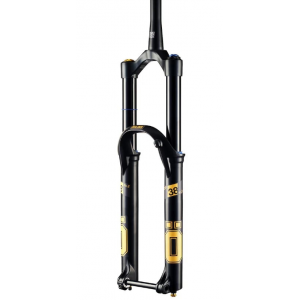

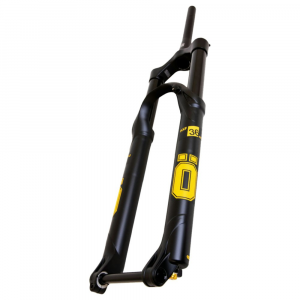
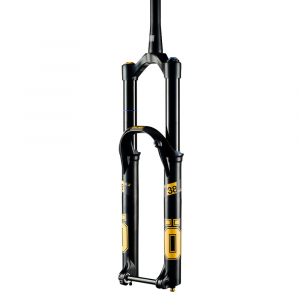

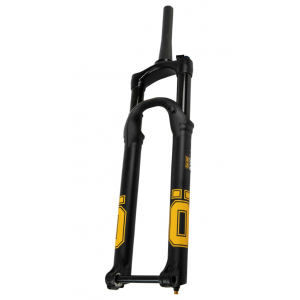

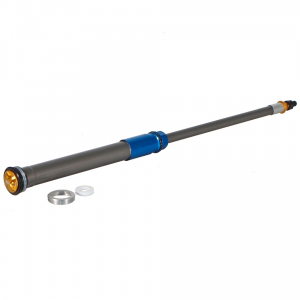

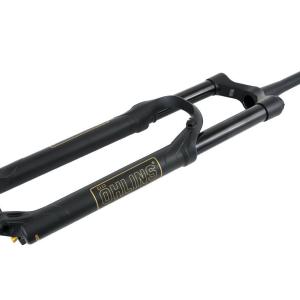
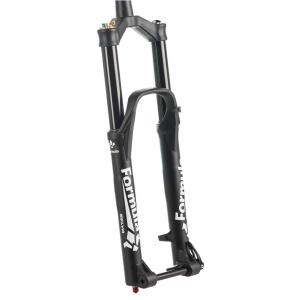
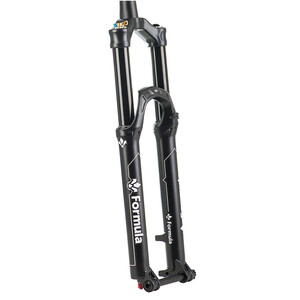
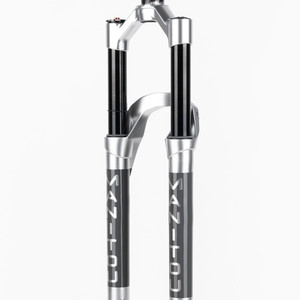


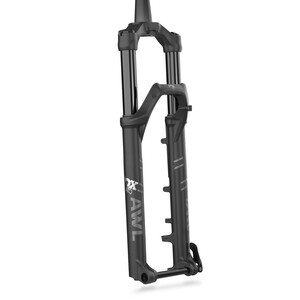
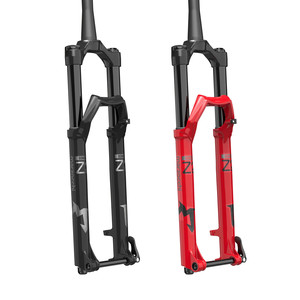






1 comments
Post a reply to: Tested: Öhlins RXF 34 Fork